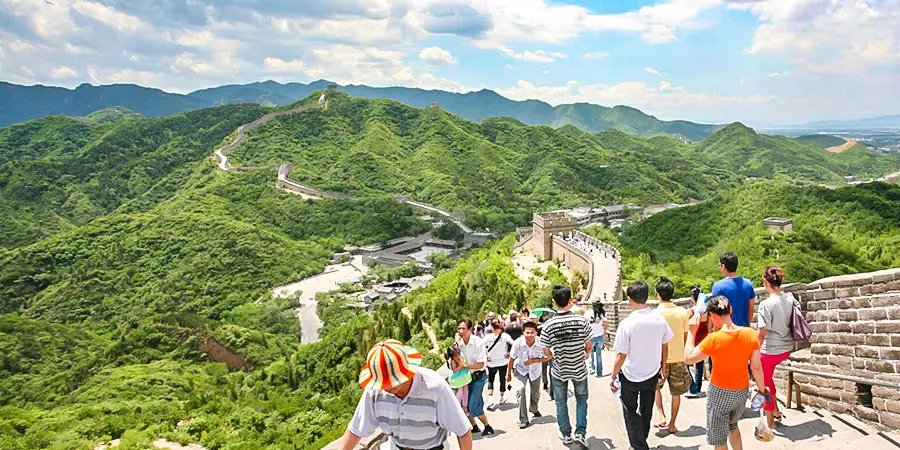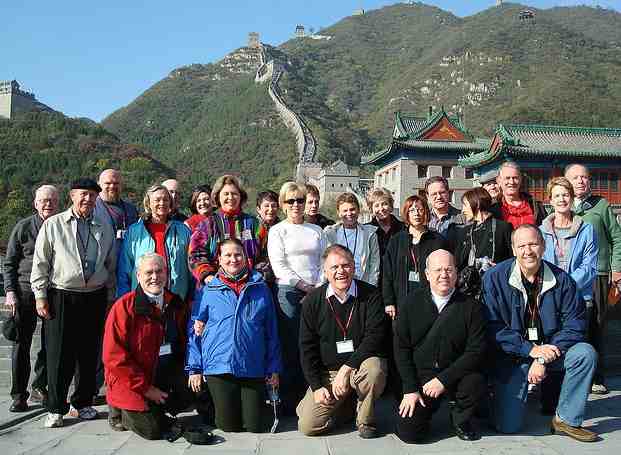20 New Pieces Of Advice To Explore Local Chinese Cuisine
20 New Pieces Of Advice To Explore Local Chinese Cuisine
Blog Article
Top 10 Tips To Explore The Regional Cuisines In China
1. Learn about the Eight Culinary traditions. Tip: Get familiar with the eight most popular Chinese cuisines : Sichuan Cantonese Shandong Jiangsu Fujian Hunan Anhui Zhejiang. Each has its distinctive flavors, techniques, and food items.
Pro tip: Plan your culinary experiences according to your personal preferences.
Cons: It is difficult to remember all the subtleties in each cuisine.
2. Embrace local specialties
Explore the local specialties Try the regional specialties, such as Peking Duck (in Beijing), Xiaolongbao or Hot Pots in Chengdu.
Pro: You will enjoy a culturally rich and authentic dining experience.
Cons: Can hinder your exploration of different food options while in a particular region.
3. Taste the regional Flavors
Tips: Sichuan food is hot and dull. Cantonese cuisine is light and refreshing. Jiangsu dishes tend to be delicate and sweet. It is important to select dishes that match your tastes and tolerance to spice.
Pro can help you avoid eating dishes that may not be suitable for your palate.
Cons: Some flavors may require some experimentation and a cultivated taste.
4. Explore Street Food
Try the street food in all cities. For instance in Beijing you can purchase Jianbing, which are savory crepes. In Xi'an they offer Roujiamo which is Chinese burgers. Explore local cuisines.
Pro: Street foods are cheap, quick and convenient. They also give a glimpse of local life.
Con: Hygiene concerns can be present occasionally. Pick vendors who conduct many business.
5. Learn Basic Dining Etiquette
Tips - Be aware of Chinese eating habits, such as family sharing and not putting chopsticks vertically in rice.
Pros: It shows that you value the local culture while enriching the dining experience.
Con: Takes time to understand and adapt to unfamiliar etiquette.
6. Find out what locals think of you from the community.
Locals know what the top restaurants or dishes are in their local area. Don't hesitate to ask locals for their tips.
The greatest thing is that you can discover hidden treasures that are not tourist traps.
Cons Con: Communication can be difficult due to language barriers.
7. Be open to unfamiliar ingredients
Explore your imagination and discover unique ingredients in regional food preparations. Be open to new cuisines.
Pro: Increases your knowledge of Chinese culture through expanding your palate.
Con: You might not enjoy all of the food or may have food restrictions.
8. Dietary restrictions can be accommodated
Tip: You can use Mandarin phrases to express preferences or allergies. For instance, "Wo bu Chi Rou" (I do not take meat for dinner).
Pro: A more secure dining experience that is tailored to your individual needs.
Con: Certain cuisines may have limited options for particular dietary restrictions.
9. Serve regional beverages alongside your food.
You can try local drinks such as tea from Fujian or Baijiu in northern China.
Pro: Enhances the dining experience and improves overall dining experience.
Con Contra: Strong flavors like baijiu may not please all.
10. Avoid Overordering
Tip: Chinese dishes are typically served family-style, so order moderately and then add more as needed.
Pro: Reduces food waste and guarantees you can sample multiple dishes.
Con: It can be tempting to order too much due to the variety of options.
Explore the cuisines of regional regions in China The benefits
Discover a variety of tastes and techniques.
Cultural Insights : Develop an understanding of regional identity and customs.
The price of many local dishes is affordable.
Experience that will last a lifetime: The aroma of famous dishes in their original setting creates memories that will last for a lifetime.
The cons of Exploring Chinese Regional Cuisine
Hygiene Concerns Some restaurants or street food may fail to meet international sanitation standards.
Language Barriers. Menus and explanations in Mandarin could make it difficult to take orders.
The unfamiliar flavors and textures: For some people certain tastes or textures might be foreign to them.
In some areas the strict vegetarians, people who suffer from food allergies, as well as vegans can have difficulties.
Following these tips and being adventurous will allow you to experience the wide range of regional Chinese dishes, while overcoming any challenges. Take a look at the top rated get insights on this tourist spot for site info including eating in fuzhou, eating in dunhuang, shopping in harbin, tours for the disabled, naked marriage in china the most fashionable wedding style for the 1980s, top three buddhist temples in chengdu, ancient dapeng fortress, blue dragon temple, lion forest garden suzhou classical garden, mount li a royal garden since the zhou dynasty and more.
Top 10 Tips For Seasonal Trips To Famous Temples In China
1. Visit during the off-season, usually from November to January. There are fewer tourists and it is cooler.
Pro: A less crowded. Provides a serene and contemplative environment.
Cons: It can be colder and less comfortable to go to temples outdoors.
2. Be prepared for extreme weather
Tips - Temperatures can vary dramatically in different seasons. Winter can be very cold, whereas summer temperatures can be extremely hot. Pack for the weather.
Pro: Your visit will be comfortable and enjoyable since you'll be well-prepared to deal with any weather.
Con The issue is that packing for extreme weather can be a hassle, particularly if you're traveling with a light load.
3. Visits in Spring and the Summer to See Vibrant Flora
TIP: Visit temples at the beginning of spring as well as during summer. This is when you will find beautiful gardens, lush blooms, and beautiful landscapes all around.
Visit the temple grounds for stunning views.
Con Cons: Summer can be hot and crowded, particularly during national holidays.
4. Take into consideration festivals and special events.
TIP: Plan your trip around traditional festivals like the Chinese New Year in January/February or the Mid-Autumn Festival in September. These periods offer rituals, celebrations as well as the opportunity to observe the temple's vibrant cultural activity.
Pro Temples are usually vibrant and full of traditional activities, giving visitors the most unique experience.
Con: During festival times, temples can get very busy and accommodation costs may increase.
5. Avoid Peak Holiday Seasons
TIP: Avoid visiting temples during peak tourist times, like Chinese New Year and Golden Week (October), as they are likely to be crowded by both local and foreign visitors.
Pro: More tranquil visits without the crowds, giving a more spiritual and peaceful experience.
Con: You'll miss the special festival events during peak periods.
6. Be aware of Temple Closures during Winter
Be sure to verify the time ahead. Certain temples, particularly in northern or remote areas might only be accessible during specific hours or close entirely during winter. Be sure to check ahead.
Cons: You won't be wasting time and you can plan your other activities.
Con: You might be disappointed if certain temples are closed for a period of time or are completely closed to make construction work.
7. Early Morning Visits to Summer
Get there early to stay away from the scorching heat of the midday sun. A lot of temples are open at dawn. This is a tranquil time with less visitors.
The cooler temperatures and lack of crowds makes for more tranquil vacation.
Con: Needs a early rise-up time, which might not be a good fit for all.
8. Be prepared for rain during the summer
It can rain heavily in summer, particularly in southern China. If visiting during this season bring an umbrella or rain gear to stay comfortable.
Pro: You are able to enjoy the temple's beauty even in the rain.
Con: Rain may interfere with outdoor activities and cause temples to become slippery.
9. Visit temples in the Mountainous Areas in Autumn
Tips: Autumn is the ideal season to go to temples in mountainous regions (e.g., Mount Wutai or Mount Emei) as the temperatures are pleasant and the autumn leaves create amazing scenery.
Pro Cons: Cooler temperatures are perfect for hiking and exploring nature.
Con: Popular mountains temples can still attract crowds especially on weekends or during holiday seasons.
10. Take a look at the Lunar Calendar in Specific Cases
Tips: A lot of temples in China follow the lunar calendar, and certain rituals or occasions are tied to specific lunar dates. To attend events like Buddha's Birthday or the Lantern Festival in China, you should check out the lunar calendar.
Pros: Experience unique rituals and practices of the culture, as well as gain greater understanding of the local traditions of spirituality.
Cons: It may require extra planning time and research to ensure that your travel dates are aligned with the lunar calendar.
Pros of Seasonal Visits to Chinese Temples
Less crowds: Visits in the off-season are less busy and more reflective.
Cultural Events: Festivals offer an opportunity to learn more about local religious and cultural traditions.
Scenic Beauty. The seasons of spring and autumn will provide stunning scenery. The vibrant gardens around temples are another great alternative.
Cooler Weather: Autumn and winter provide cooler temperatures for temple exploration.
Cons of Visits to Chinese Temples in Season
Unpredictable Weather: Winter may be cold and summer can be hot, which could affect your comfort.
Certain temples are closed during extreme weather conditions or during the off-season.
Crowded during Festivals: Popular festivals and holidays can draw huge crowds that can make it difficult to fully appreciate the tranquility of the temple.
Limited Activities: If you are traveling outside of the season, some special events during the season may not be held.
Select the appropriate time of year to visit China's most famous temples and plan accordingly. This will ensure you'll have an unforgettable experience. Understanding the seasonal changes is essential to making the most out of every excursion. See the top discover what to see and do at this site for more recommendations including a wonderful landscape painting lijiang river, chaotianmen dock%EF%BC%8C a major water transportation hub in chongqing, eating in taiyuan, shopping in dunhuang, luoyang peony and wangcheng park, binhai aircraft copyright theme park in tianjin, wuxi a shining pearl of taihu lake, shanghai portman acrobatic show one of the best acrobatic shows in shanghai, lion forest garden suzhou classical garden, hua diao the most famous shaoxing yellow wine and more.